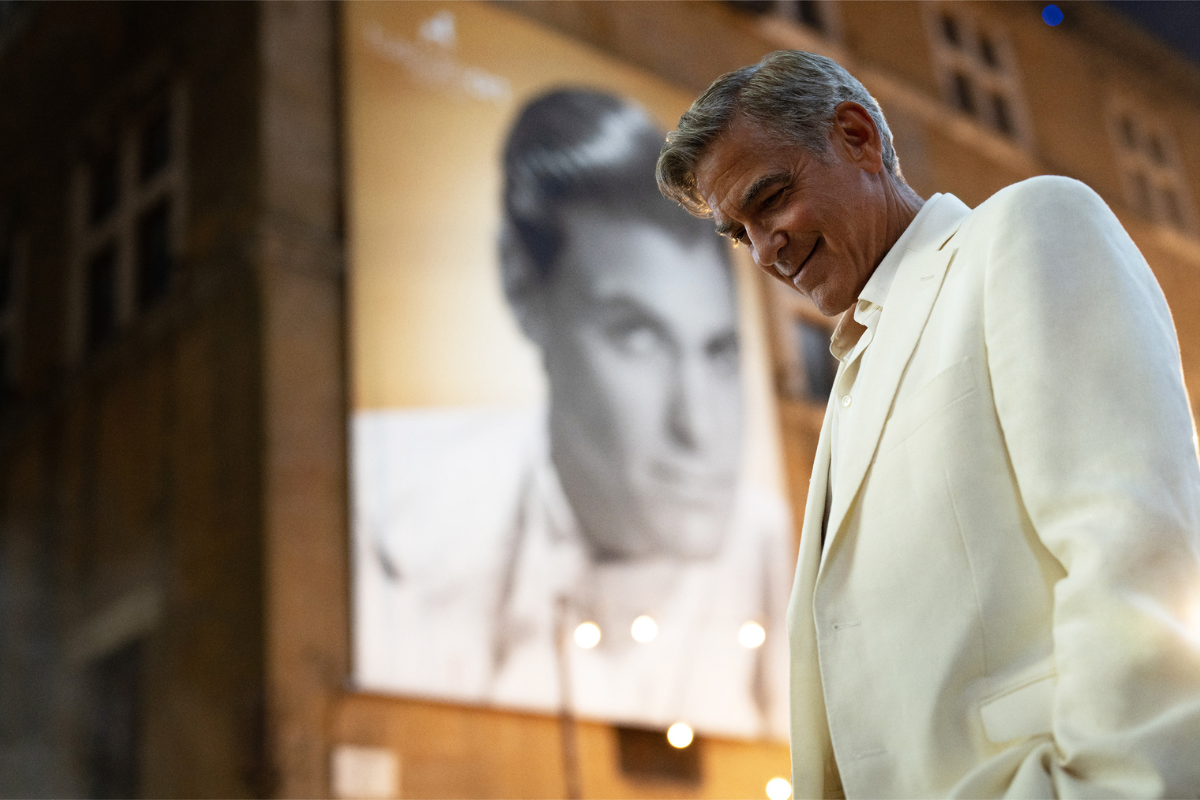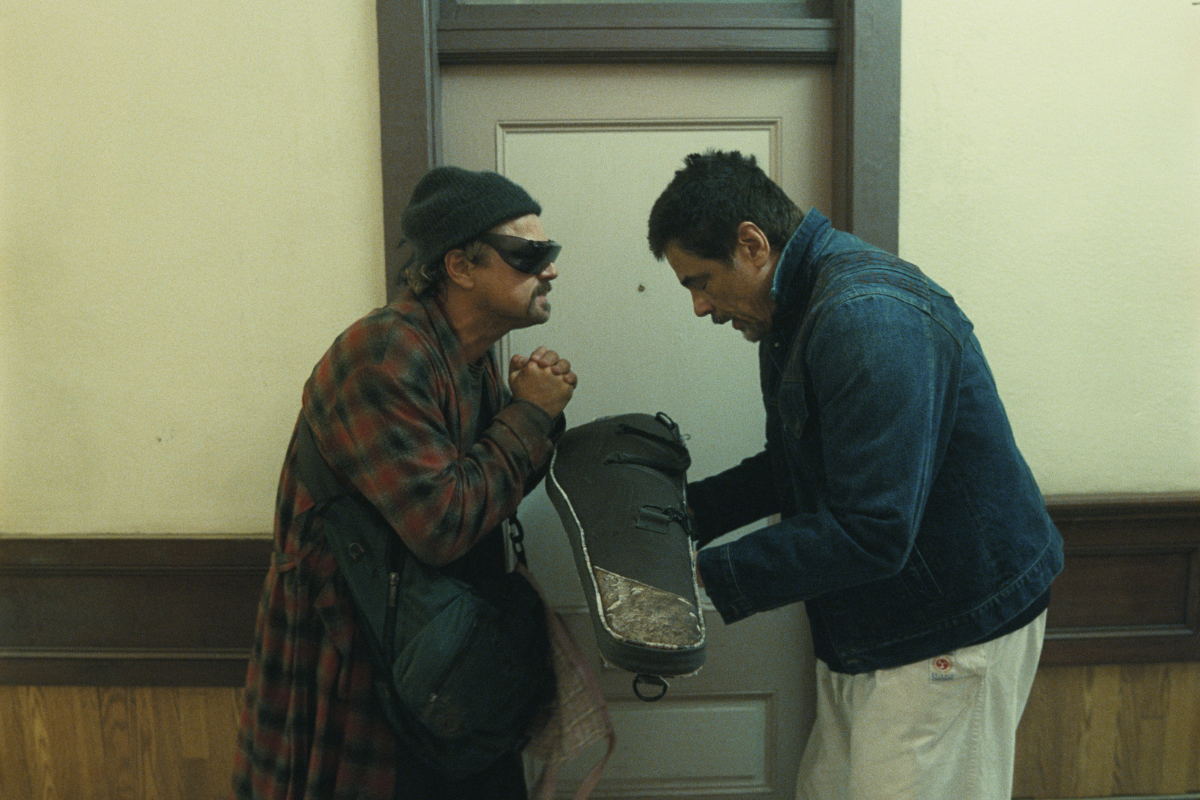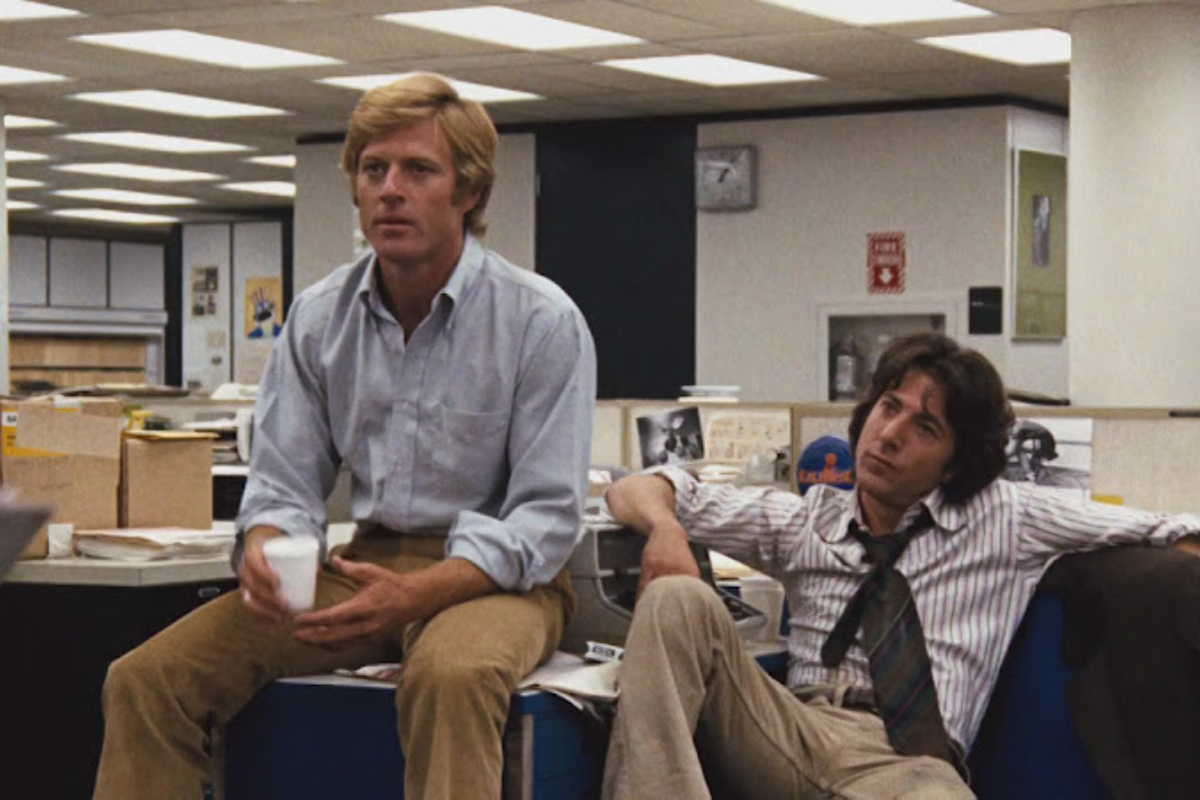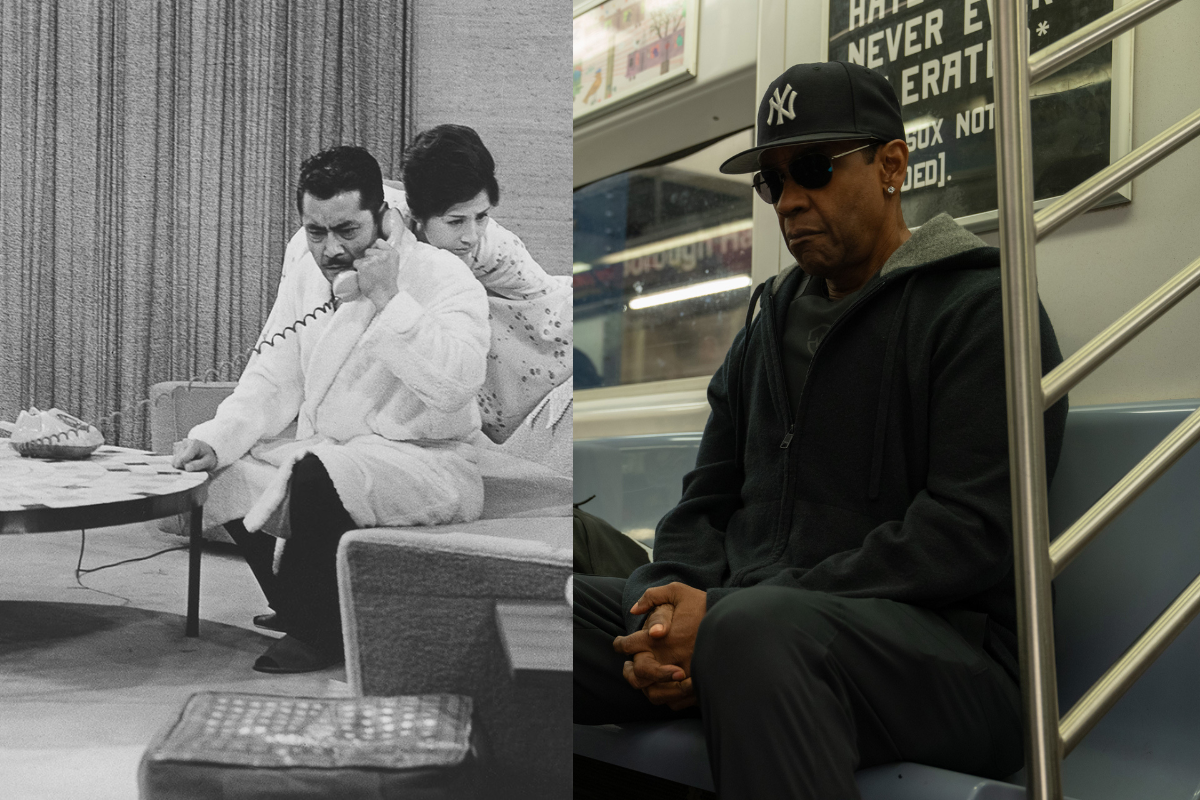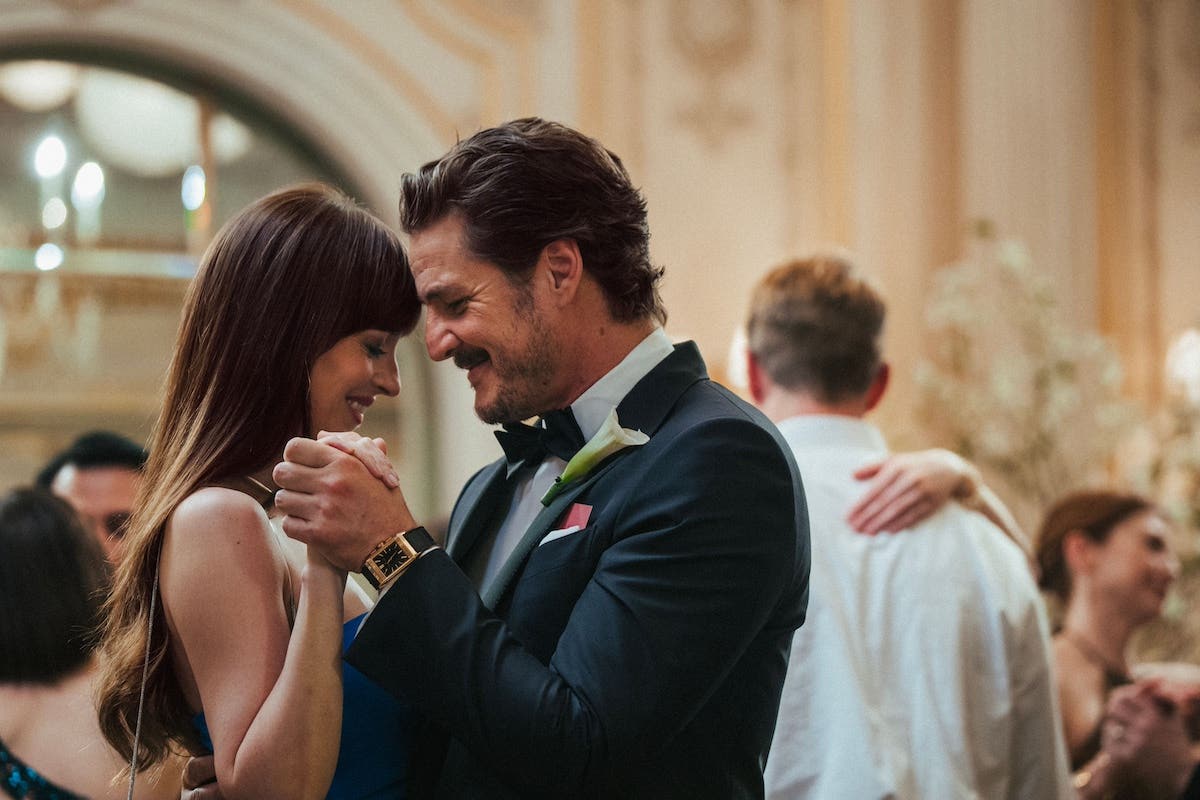UNDERSTANDING SCREENWRITING: Autumn Snows
Tom Stempel is going new and old again: the new television season and an older movie, The Snows of Kilimanjaro.
You Call This a New Television Season?
Normally (you do remember normal don’t you?) the fall brings us a brand new television season, filled with new shows and returning ones. Normally, I would do one or more items on the new season. Well, we are not yet back to normal, so new and returning shows are just dribbling back in. Some of them are miniseries that probably completed at least shooting before the pandemic hit and some are series that have begun to shoot under the new safety guidelines. Here are some shows of interest that have come on in the last few months.
Showtime’s The Good Lord Bird is a mini-series about John Brown, whose attack on Harper’s Ferry was one event that provoked the Civil War. It is based on the 2014 novel by James McBride that won the National Book Award for Fiction. One reviewer of the book called it “like a modern-day Mark Twain.” Another called it “boisterous,” while another said it was “a rollicking saga.”
The miniseries is none of those things.
What went wrong?
The book and the miniseries are narrated by Henry, a Black teen, who is taken up by John Brown, who thinks he is a girl. Another reviewer said the book’s “effervescent young narrator is pitch-perfect.” He is not on film. I assume a lot of the narration in the series is from the book, and it may read boisterous, it does not sound so. There have been other movies that managed that, like Little Big Man (1970) and the two versions of True Grit (1969, 2010), since their narrators (Jack Crabb and Mattie Ross) are livelier characters than Henry. Mostly we get Henry watching what is going on, which gives some nice reaction shots on film, but he never hits the right tone the way Jack and the two Matties do in their films.
Another problem is the acting. Ethan Hawke is not only one of the producers of the series, but stars as John Brown. When a star who is also the producer starts to overact, as Hawke does, there is nobody to tell him to take it down a notch. Particularly in the first episode it quickly becomes exhausting to watch Hawke. He occasionally calms down a bit, then takes off on another flight. His best scene is also his quietest: his farewell to Henry before he, Brown, is (spoiler alert) hanged. The other actors are all over the map. By far the best is Daveed Diggs, formerly Lafayette and Thomas Jefferson in the original Broadway production of Hamilton, as Frederick Douglas. He at least is boisterous-adjacent. Another one is Maya Hawke, who pops off the screen in one episode as Brown’s daughter. Well, she comes by it naturally: she is the daughter of Ethan Hawke and Uma Thurman.
The Undoing is a new HBO series in the vein of Big Little Lies (2017-2019). Like the earlier series, this one is written by David E. Kelley and stars Nicole Kidman. It is based on the novel You Should Have Known by Jean Hanff Korelitz. Kidman plays Grace, a therapist with a charming, successful pediatric oncologist husband. They are typical rich Upper East Side New Yorkers. Then Grace’s life falls apart when Jonathan, the husband, is accused of the murder of a woman he was having an affair with.
The reviews of the book point out it is not really a thriller, but a look into Grace’s character. In the book, we never really meet Jonathan, but Kelley has smartly made him a major character, so instead of Grace just thinking about him, Nicole Kidman gets to play some great scenes with Hugh Grant. The series does move slowly, as miniseries tend to, but it gives us time to watch Kidman use all of her acting skills to reveal Grace to us. I stuck this one out to the end, but I guessed somebody else was the true murderer, so I got taken in my Kelley’s red herrings.
We got a new season of Fargo, and it is a real disappointment. First of all, it is nowhere near Fargo. We are in Kansas City in 1950. The show is created and written by Noah Hawley, who has done the previous series. The main plot deals with two gangs, one Black, one Italian. It is the least interesting element in the film. It has been 48 years since The Godfather first appeared, and we have seen more than our share of gangsters in long coats riding in vintage cars and killing each other. Hawley brings nothing fresh to that.
The secondary characters make the show worth watching. One is s, a nurse with a tendency to help her patients slip into an easeful death. She is played by the spectacular Jessie Buckley, an Irish actress, whom I have not seen in that much. I was amazed to discover she was Irish since she nails the Minnesota accent flawlessly. She is a singer and said in an interview in the Los Angeles Times that she can nail accents because she treats each accent like a piece of music. Now you know how it’s done.
A second set of interesting characters are two women who have recently escaped from prison. One, Zelmare, is a relative of the wife of the owner of the local funeral parlor; the other, Swanee, dresses like a cowboy. They cause a lot of trouble for everybody in a variety of ways. Then there is a visiting marshal, Dick Wickware, a Mormon from Utah, who is played by Timothy Olyphant in a bit of a tonal shift from his Raylan Givens in Justified (2010-2015).
Unfortunately, the gangsters are not very interesting or fresh characters. Every time they are on screen, which is too much, you keep wanting to get back to Oraetta, Zelmare, Swanee, and Dick. Then Hawley (and his fellow writers) start killing off all those interesting characters. By the end there is only one person left to kill and, yup, he gets it too.
Filthy Rich is a new regular series on Fox based on a New Zealand series. The American version is so American I cannot imagine what the New Zealand version was like. Our version is set in New Orleans and focuses on the Monreaux family and their business. They run an evangelical television network, and the striking thing is that the show is not a satire of the evangelicals. Anybody else in Hollywood would have made it a satire, but here the show takes its evangelicals seriously, although they do not of course always live up to their Christian beliefs. They sin, confess, rinse, and repeat.
One of the creators, executive producers, and directors is Tate Taylor, who grew up in Mississippi and is best known for writing and directing The Help, so you know he knows the South. The star of the show is Kim Cattrall, and her performance here is about as far away as her Samantha Jones in Sex and the City as you can get. Her Margaret Monreaux has to take over her husband Eugene’s empire when he supposedly dies in a plane crash. We see her deal with three illegitimate children Eugene sired: a pot grower in Colorado, a Latino boxer, and a woman running a phone sex operation. High jinx ensue even before we learn that (spoiler alert) Eugene is not dead. The supporting cast is good and they keep the tone of the show while it bounces back and forth between non-satire and definitely soap opera.
Mom is back for its 8th season, but without one of its stars. Anna Faris has left the show. When the show started back in 2013, it was about Allison Janney’s Bonnie and her adult daughter Christy, played by Farris. Christy had two kids in their teens. The franchise was the family. One of the recurring elements was that both Bonnie and Christy were alcoholics and were attending AA meetings. As the series progressed the focus went more and more to the meetings and the women there. Christy’s kids were written if not out of the show completely, at least out of sight. In the first episode of the new season, “Sex Bucket and the Grammar Police” (Teleplay by Alisa Neubauer & Adam Chase & Ilana Wernick, story by Gemma Baker & Anne Flett-Giordano & Chelsea Myers), we learn that Christy, who has been working like a dog to get into law school, has gotten into Georgetown and has already left. So the writers did not kill her off, which suggests that a) Farris left on good terms, and/or b) the writers figured killing off such a beloved character would piss off their audience too much. In my book, Storytellers to the Nation: A History of American Television Writing, you can read about all different kinds of ways actors were written out of shows. Sometimes, making art isn’t pretty.
And, finally, The Unicorn is back for its second season. You can read my two items on its first season here and here. In that second column, read all the way to the end of the column and you will learn that the woman with the skunk that Wade met in the cemetery was played by Natalie Zea. Given her chemistry with Walton Goggins in Justified, I had high hopes for seeing them together. The opening episode of this season, “There’s Something About Whoever-She-Was” (written by Bill Martin) justified (sorry, couldn’t resist) my hopes.
Wade of course did not get her phone number at the cemetery, but he and his friends Forrest and Ben try to find her by checking out the local veterinarians to see who brought in a skunk. Well, we only see them at one of the animal hospitals so Martin can condense all their looking into one good scene. Then we see Delia and Michelle, Forrest and Ben’s wives, at an outdoor restaurant. Wade was with them but had to leave. After he leaves, the cook comes out to explain what she’s working on in the kitchen. Yep, it is Shannon. But the wives have no idea of her connection with Wade.
Wade does remember a design on a bumper sticker on Shannon’s car and doodles it. One of the wives recognizes it as the logo for a school. So Wade goes to the school, where the guard assumes he is a stalker. Just before the guard is going to run him out, Wade sees Shannon get out of the car with her daughter…and a man in the car. She recognizes Wade and they talk briefly before the school guard approaches him and he has to leave. Without getting Shannon’s number yet again. Martin’s writing makes the scene more believable than I have just made it sound. That’s why he gets the big bucks and I don’t.
All is not lost. Wade is now sitting around his house with his friends. The doorbell rings. Wade assumes it’s the pizza. It’s not.
I have mentioned Zea and Goggins’s chemistry. In this scene at the door, it is in full flower. Look it up on whatever streaming service has it and look at that scene as one of the great demonstrations of what actors can bring to a scene both individually and collectively.
The Snows of Darryl Zanuck
The Snows of Kilimanjaro (1952. Screenplay by Casey Robinson, based on the short story by Ernest Hemingway. 114 minutes)
Casey Robinson is best known for his years as a screenwriter at Warner Brothers in the Thirties and Forties. You can see what he wrote here on IMDb.
In the late Forties, he left Warners and wrote, among others, The Macomber Affair (1947) for director Zoltan Korda. It was based on a short story by Ernest Hemingway, one of the most important and influential writers of the first half of the 20th Century.
Darryl F. Zanuck, the head of production at 20th Century-Fox, figured that Robinson could do a Hemingway adaptation for him and hired him to write The Snows of Kilimanjaro. Macomber had a simple plot and was made into a simple black-and-white movie. The story of Snows had more scope, which appealed to Zanuck. The story, told mostly in dialogue, has Harry, a famous author, having been wounded while on safari in Africa, talking to his wife. The dialogue is typical Hemingway, short, simple, and to the point. Interspersed are Harry’s memories of his life. The focus in the story is on his experiences in World War I and covering the Greco-Turkish War (1919-1922) as a reporter.
Robinson, presumably in discussion with Zanuck, shifted the focus from the war scenes, which do not appear in the film, to Harry’s romantic life. In the story, there is a single mention of the woman he met before his current wife and who was the one woman he truly loved. That part was enlarged and in the movie we get a lot of scenes with her, Cynthia, and Harry in Paris in the Twenties and later in the Spanish Civil War.
Hmm, the short story was written in 1936 before Hemingway went to the Spanish Civil War. Robinson borrowed freely from Hemingway’s other stories and his life. Hemingway was not happy and told Zanuck that he had purchased the rights to Snows, but not the others. Some sort of deal was worked out.
The director assigned to the picture was Henry King. You can see his credits here. One reason King was a successful director for over forty years was that he would sit down with the writer and go through the script to find out what the writer intended. Robinson, in an oral history with Joel Greenberg, said that he spent ten weeks with King going over the script.
(The complete Robinson oral history is at the Louis B. Mayer Library at the American Film Institute. A condensed section, mostly about his Warner Brothers years, appears in the first volume of the Backstory series. The material from Henry King is from an oral history interview I did with him for the AFI.)
King thought Robinson was a “brilliant writer.” He thought that his script for The Macomber Affair was good, but that the director had missed what Robinson was getting at. For Snows, Robinson had written a 20-page scene with Harry and his first girlfriend. After discussing it, King suggested he could do the scene quicker, showing the young Harry only in shadows (since Gregory Peck, who was the adult Harry, could not pass for seventeen, King came up with the idea of having Peck re-record the kid’s lines, then technically removing the lower register to make him sound younger). According to King, Robinson went off, then came back an hour later with the scene rewritten the way King suggested. King said of him, “He’s just that…quick to grab on to ideas of how to tell stories picture-wise rather than with words.”
King thought in the script as a whole “You could never tell in this where Hemingway stopped and Robinson started, or where it went from Robinson to Hemingway and Hemingway to Robinson.” Given that Hemingway’s dialogue was often too simple and filled with declarative sentences, translating him into playable dialogue was a challenge Robinson met better than a lot of other screenwriters who tried to adapt Hemingway.
The Snows of Kilimanjaro was the most commercially successful of the Hemingway adaptations. Henry King thought it was one of many of his pictures that was “a gold mine.” Leonard Maltin only gives it three stars while he gives The Macomber Affair three and a half. As for Hemingway, he thought it should have been titled The Snows of Darryl Zanuck.
But he still cashed his check.
Tom Stempel is a Professor Emeritus at Los Angeles City College, where he taught film history and screenwriting from 1971 to 2011. He has written six books on film, five of them about screen and television writing. You can learn more about his books here. His 2008 book Understanding Screenwriting: Learning from Good, Not-Quite-So- Good, and Bad Screenplays evolved into this column. The column first appeared in 2008 at the blog The House Next Door, then at Slant, and then Creative Screenwriting before it found its forever home at Script.
In the column he reviews movies and television from the standpoint of screenwriting. He looks at new movies, old movies, and television movies and shows, as well as writing occasional other items, such as appreciations of screenwriters who have passed away, plays based on films, books on screenwriting and screenwriters, and other sundries.
In September 2023 Tom Stempel was awarded the inaugural Lifetime Achievement in the Service of Screenwriting Research by the international organization the Screenwriting Research Network.


